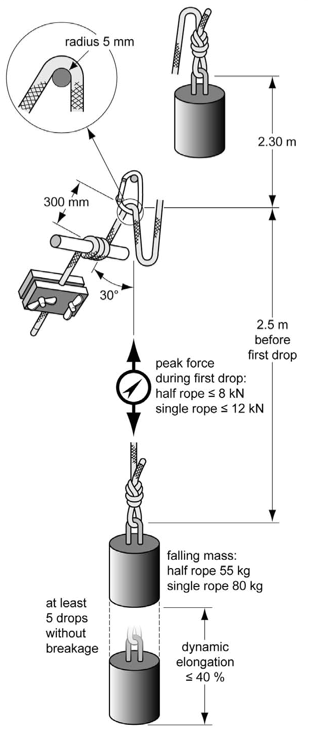Ropes

Climbing ropes
can be divided into two groups by their relative
elasticity: "Static Ropes" and "Dynamic
Ropes".
Static ropes
have low static elasticity (1%-4%). This is
useful for repelling, and climbing with a fixed
anchor above the climber, when the falls are
relatively small. But using it for more intense
falls will result in high forces acting on the
climber.
Dynamic ropes,
on the other hand, have a bigger elasticity
(6%-10%). They are the main ropes used for
climbing, as they stretch more, and thus provide
more cushioning for the fall.

(http://www.theuiaa.org/)
|
The
diagram to the right shows the standard
UIAA test for the maximum force on ropes.
In the test a 80kg weight (for single
ropes, 55kg for half ropes) undergoes a
fall with 1.77 fall factor. As the maximum
force from this fall is published, we can
calculate k for a given rope:

So:

For example, a typical single rope's
maximum force (from the test) is about 9
kN.
From this, we can calculate k:

We take this to a wide range of problems,
for example:
We can calculate the maximum weight of a
climber undergoing a fall factor of 2, so
that the system doesn't undergo dangerous
forces of more than 12kN.

This model is a very good estimate, but it
has it's limitations.
|